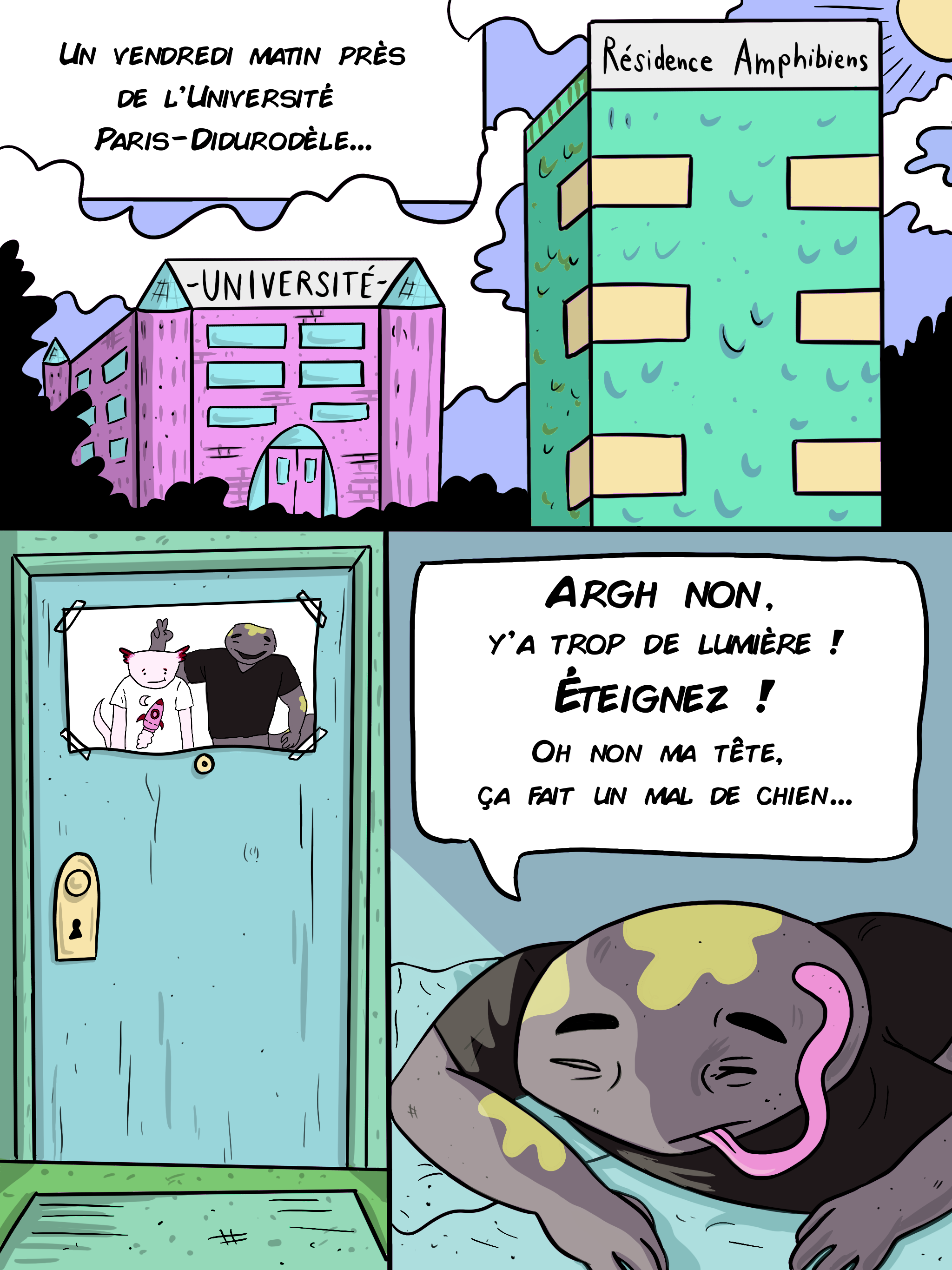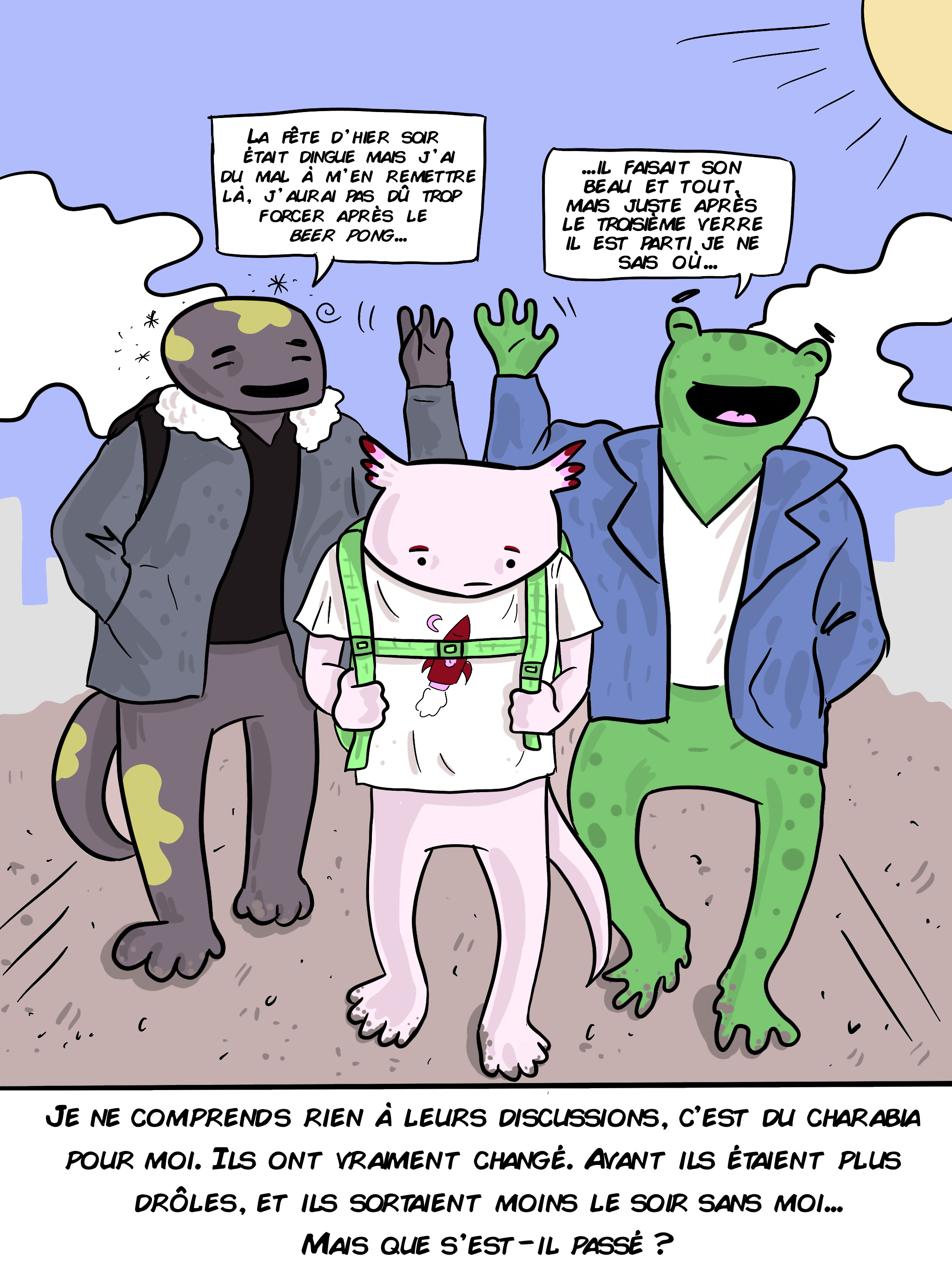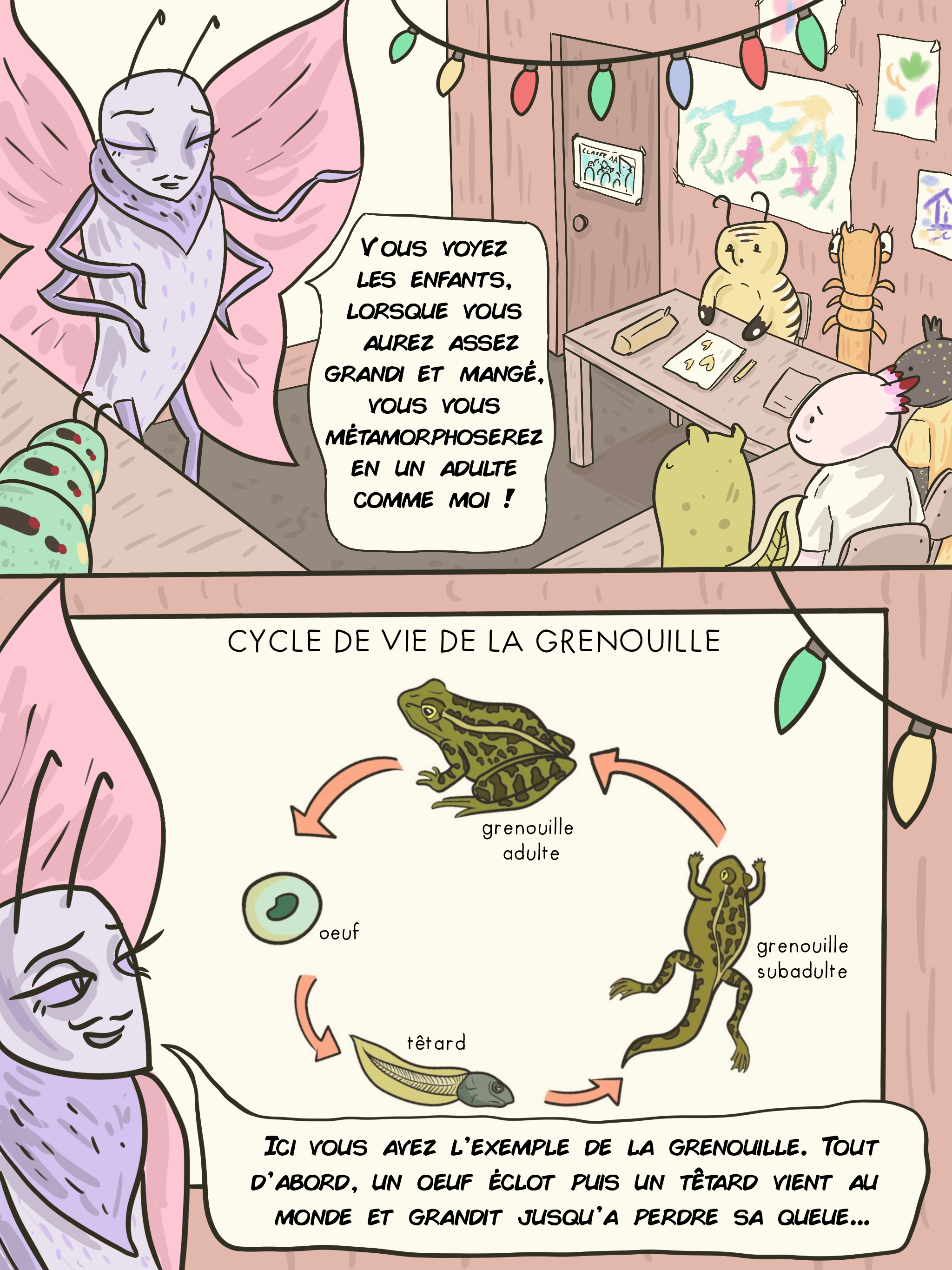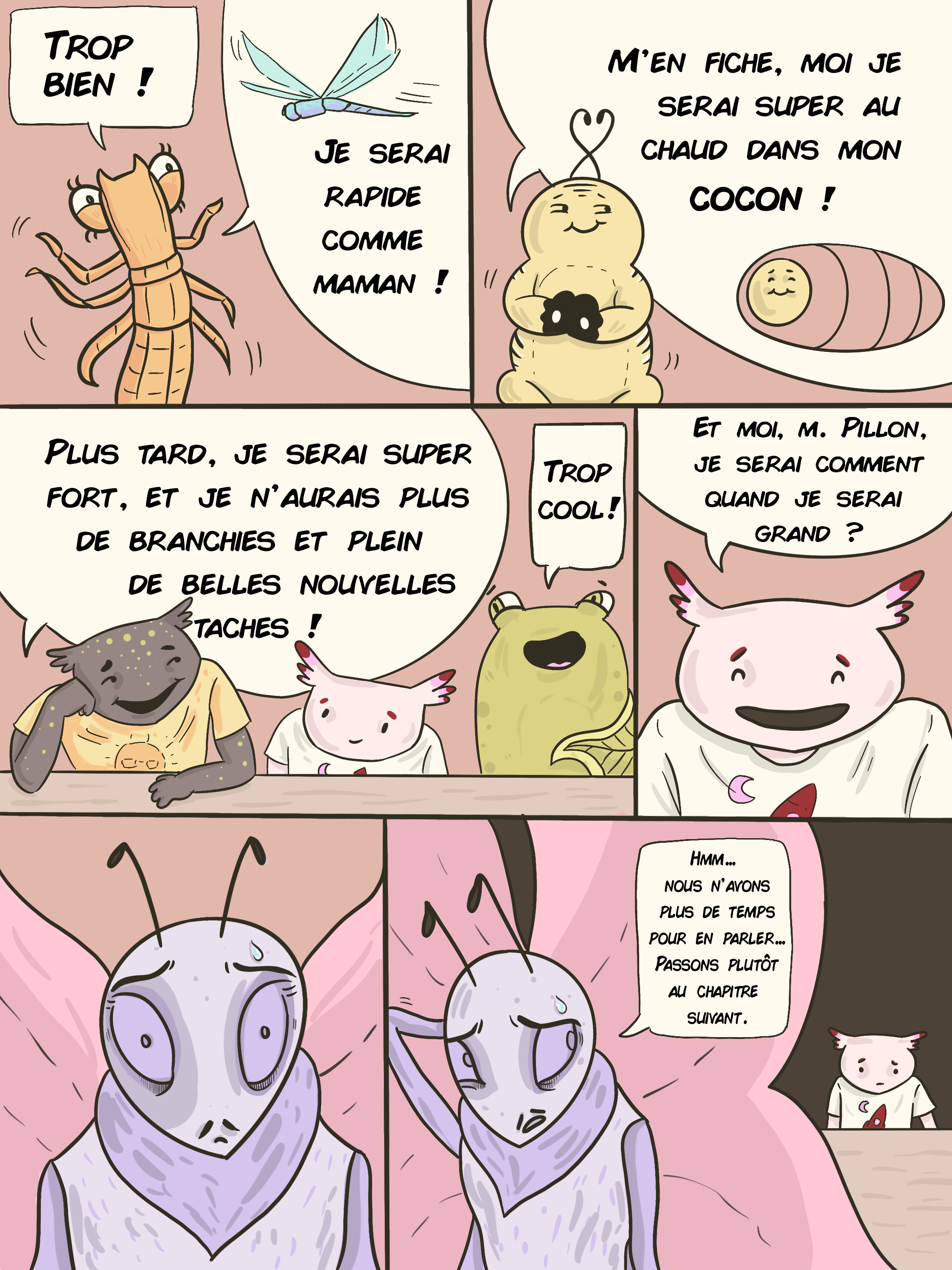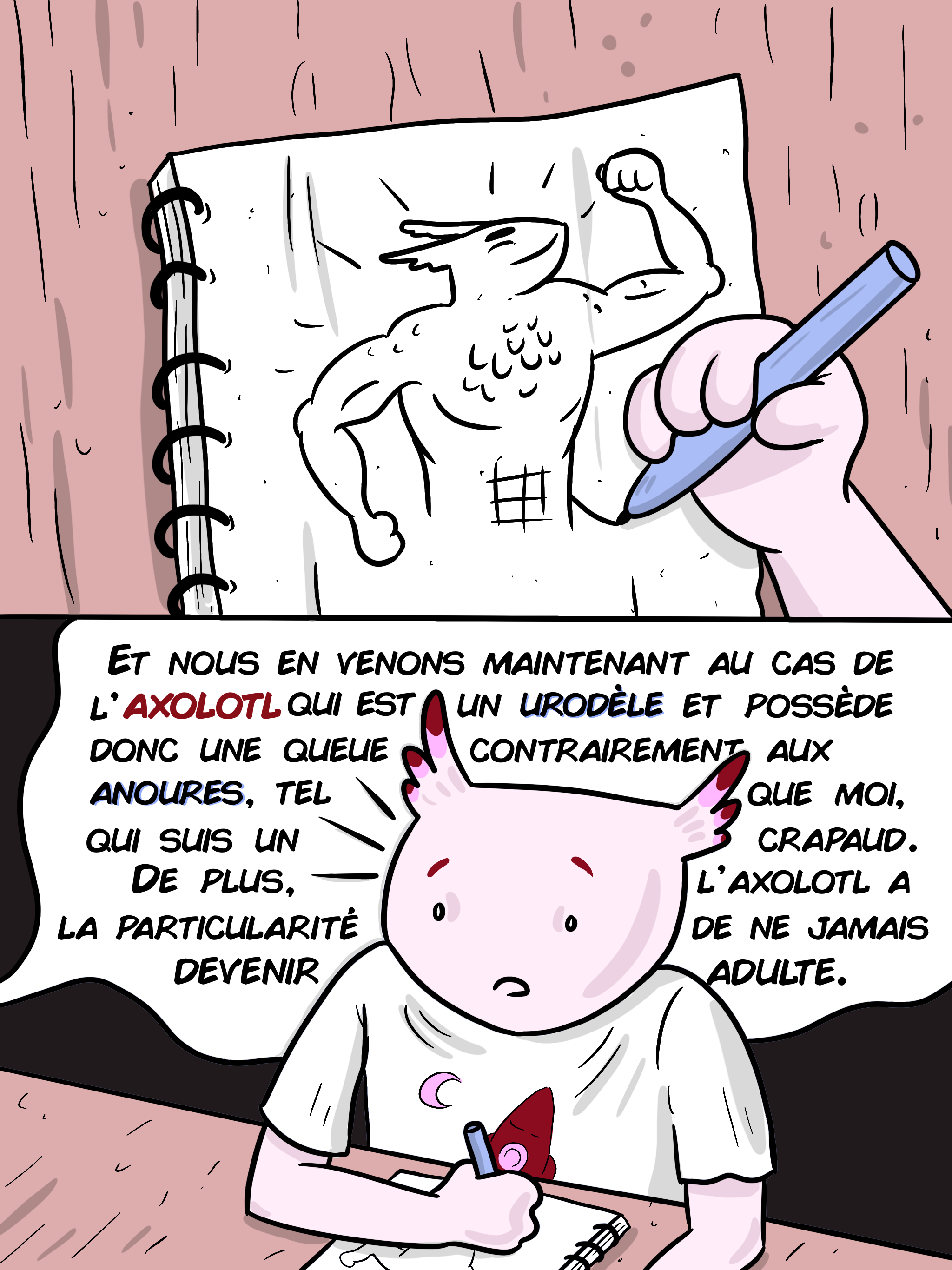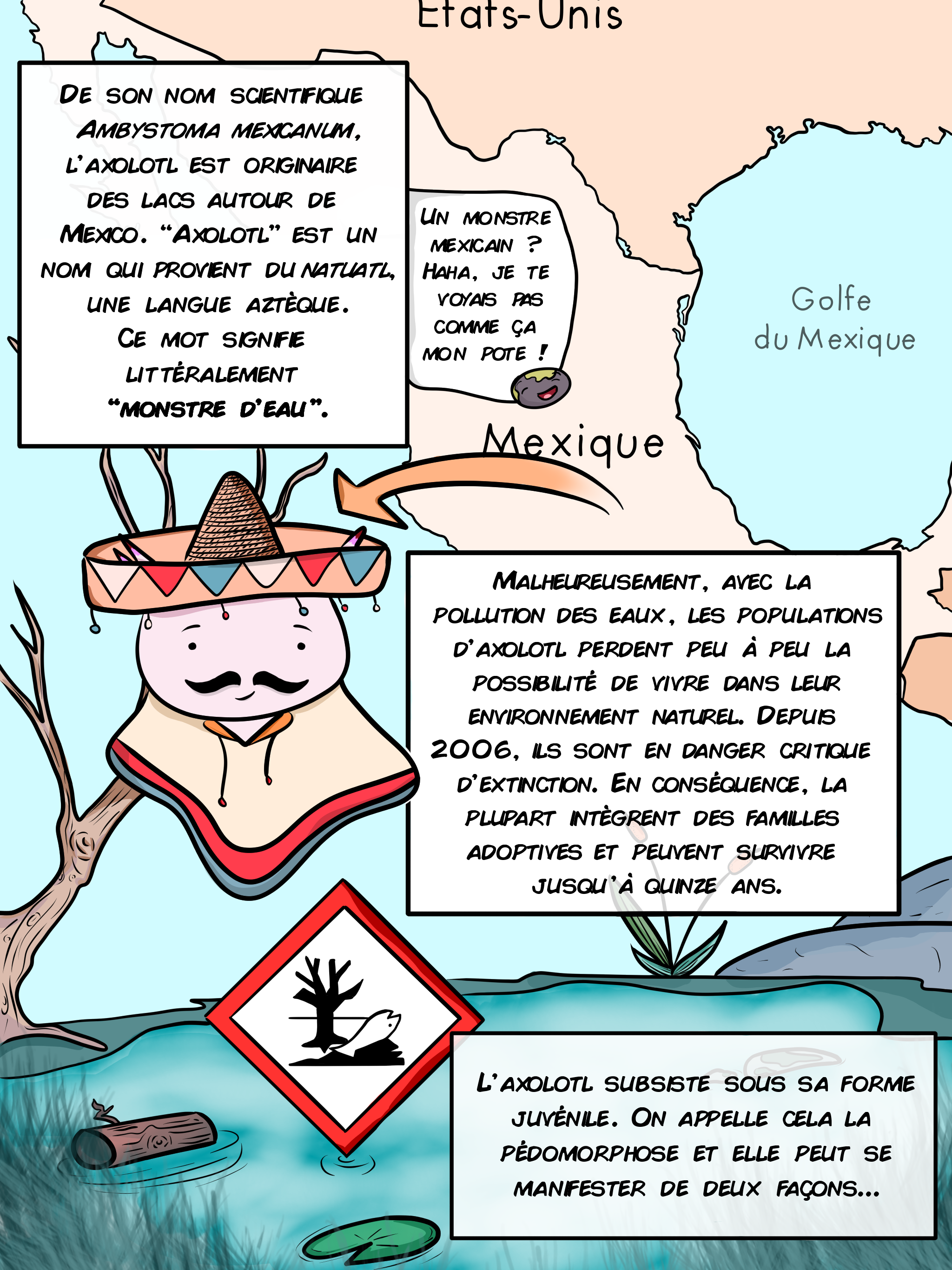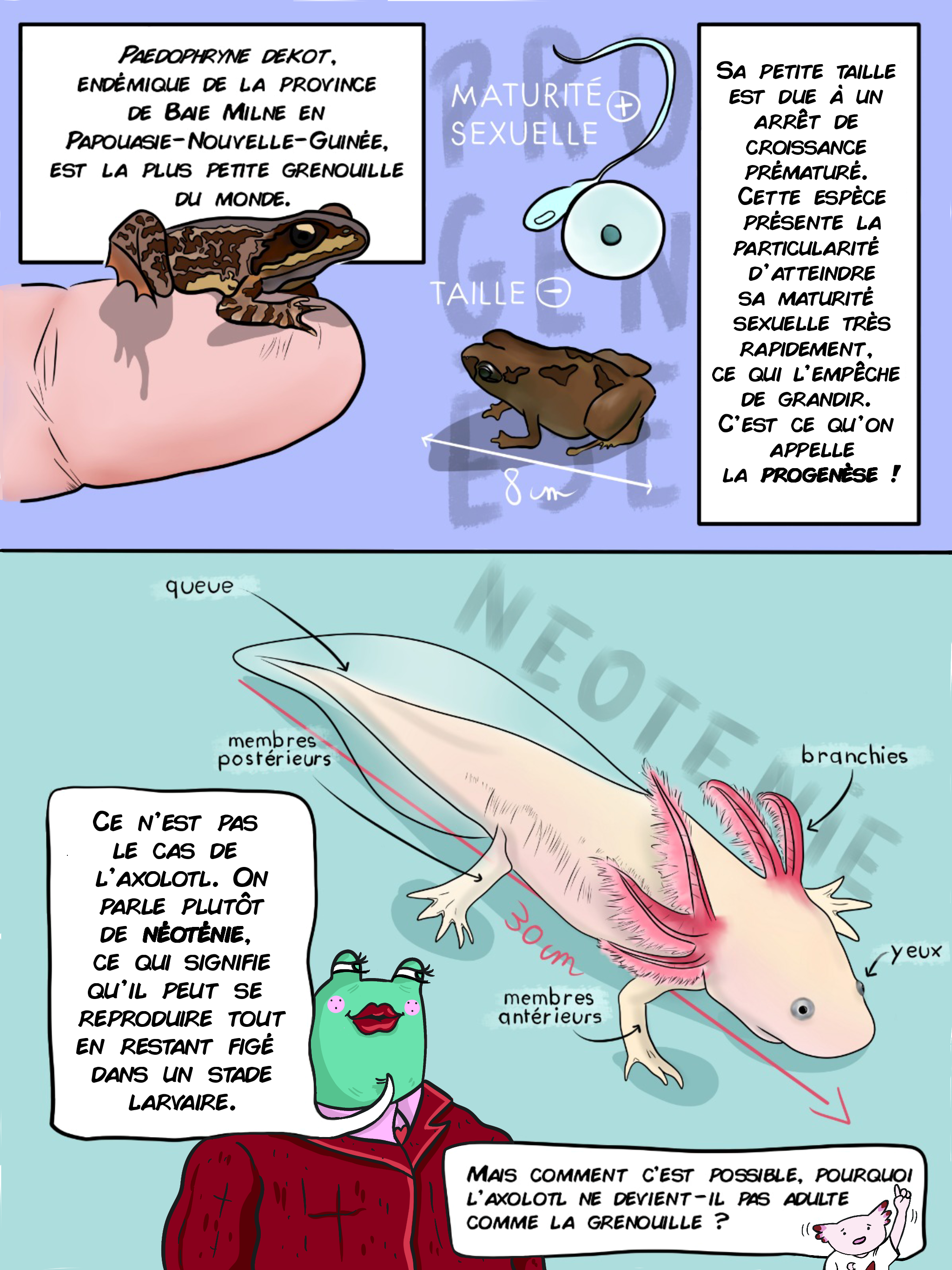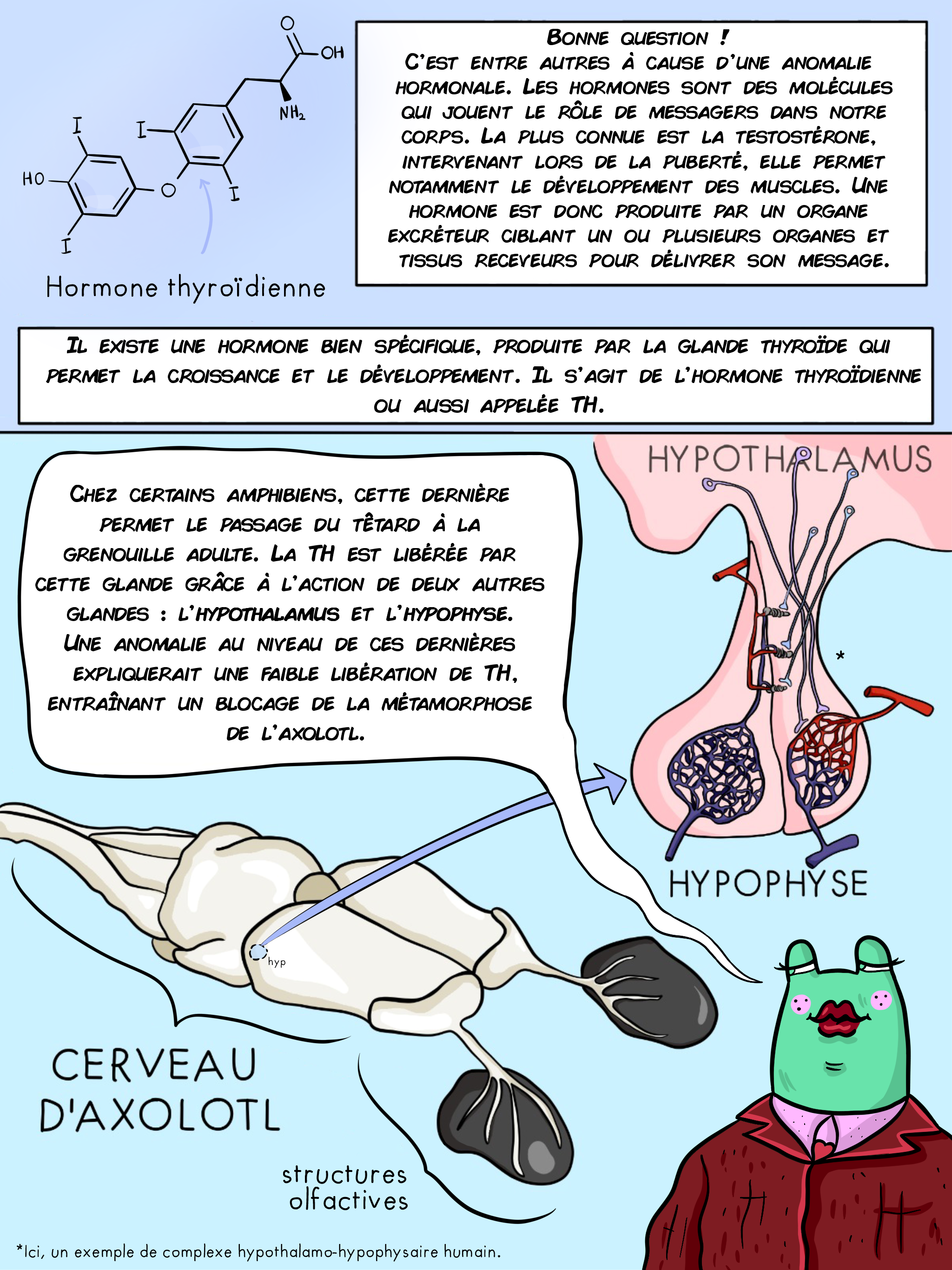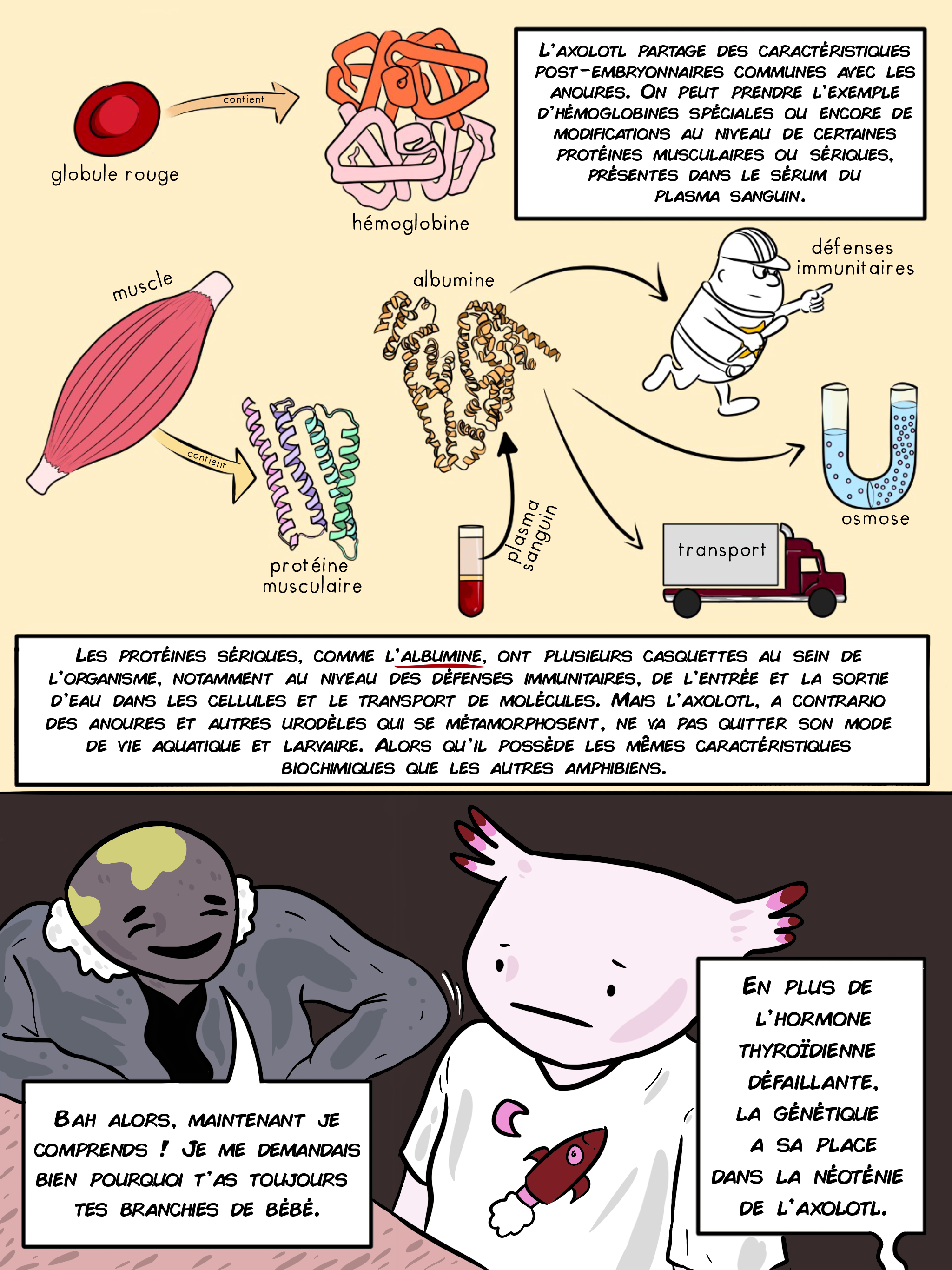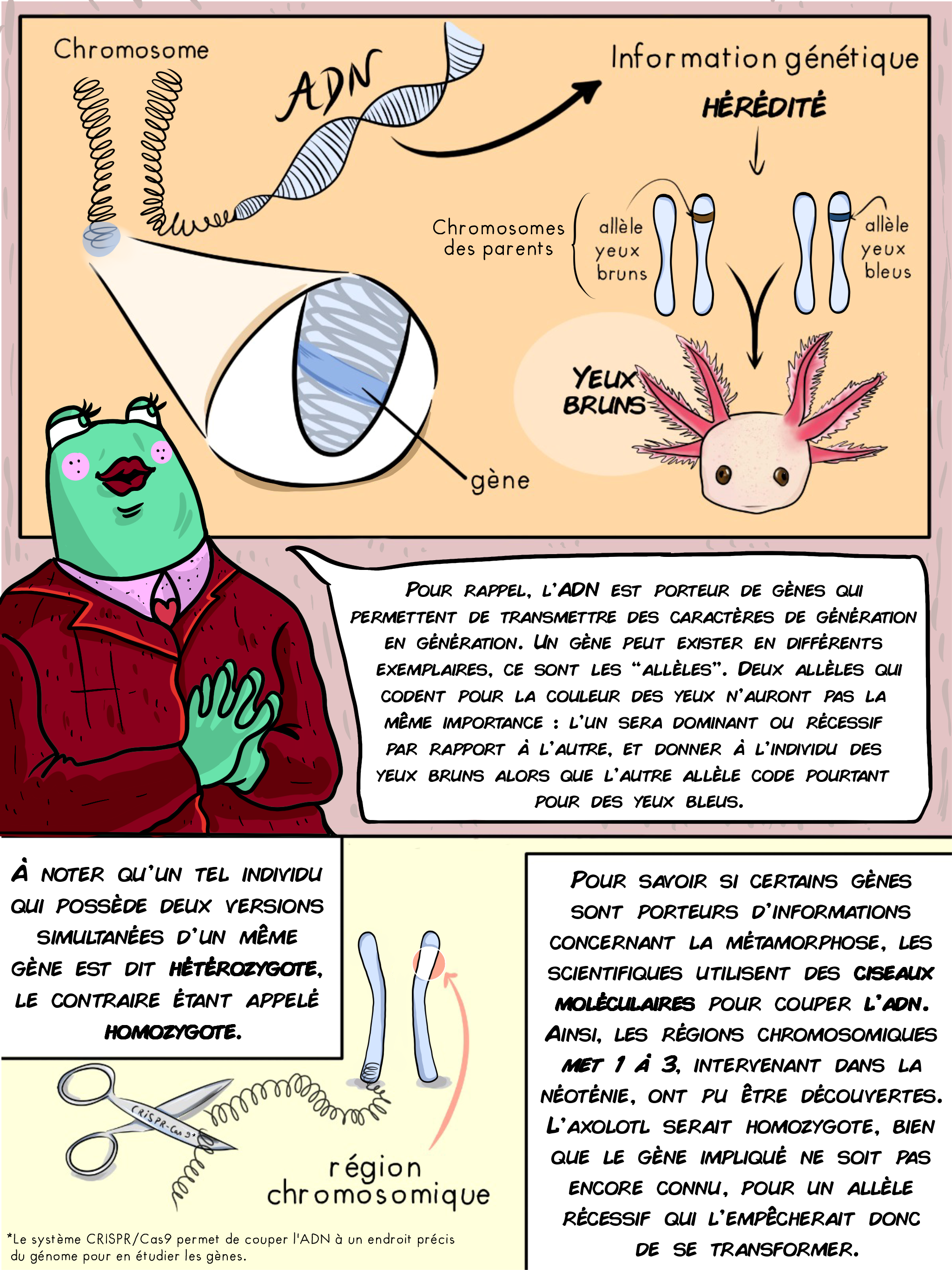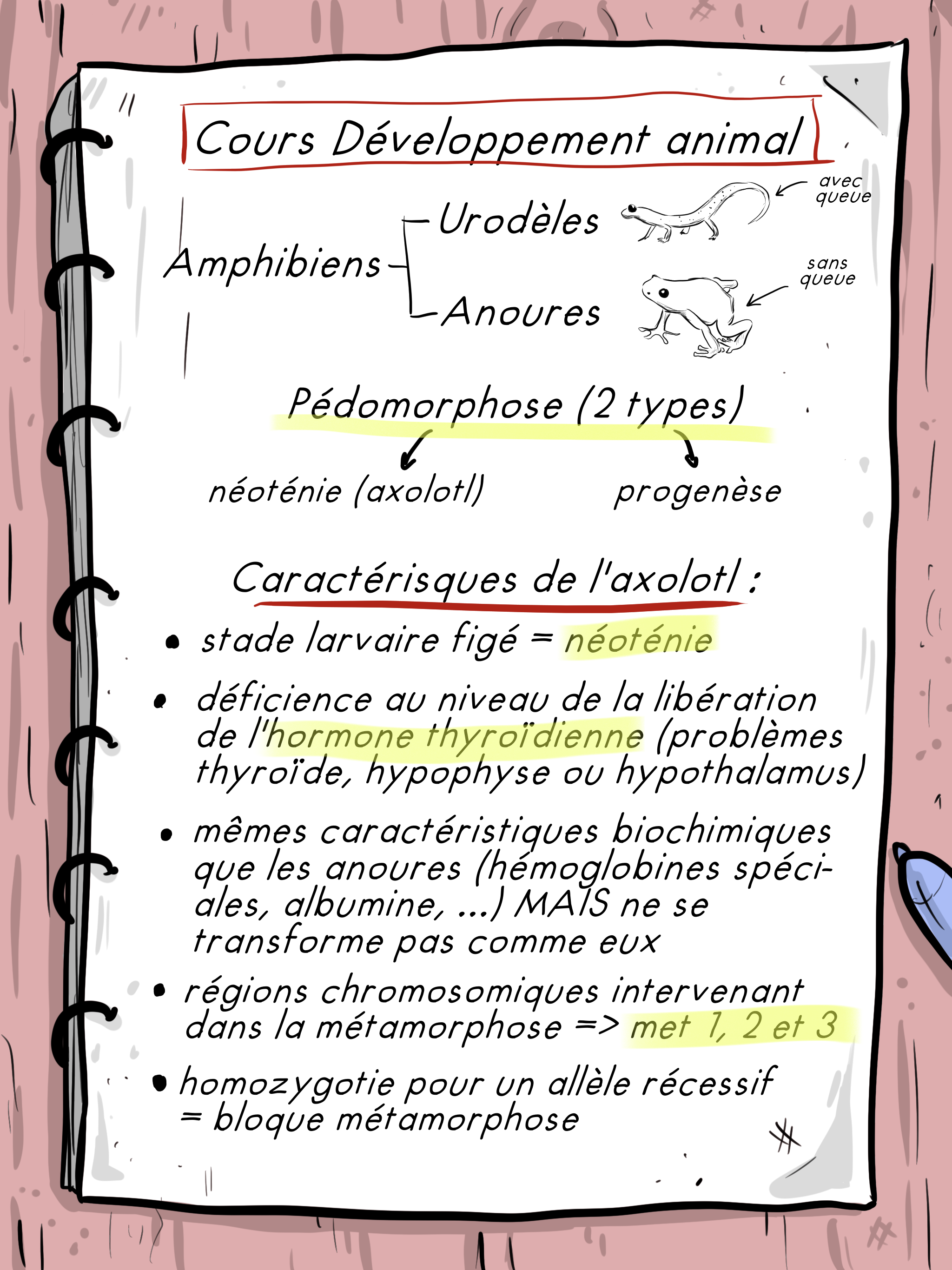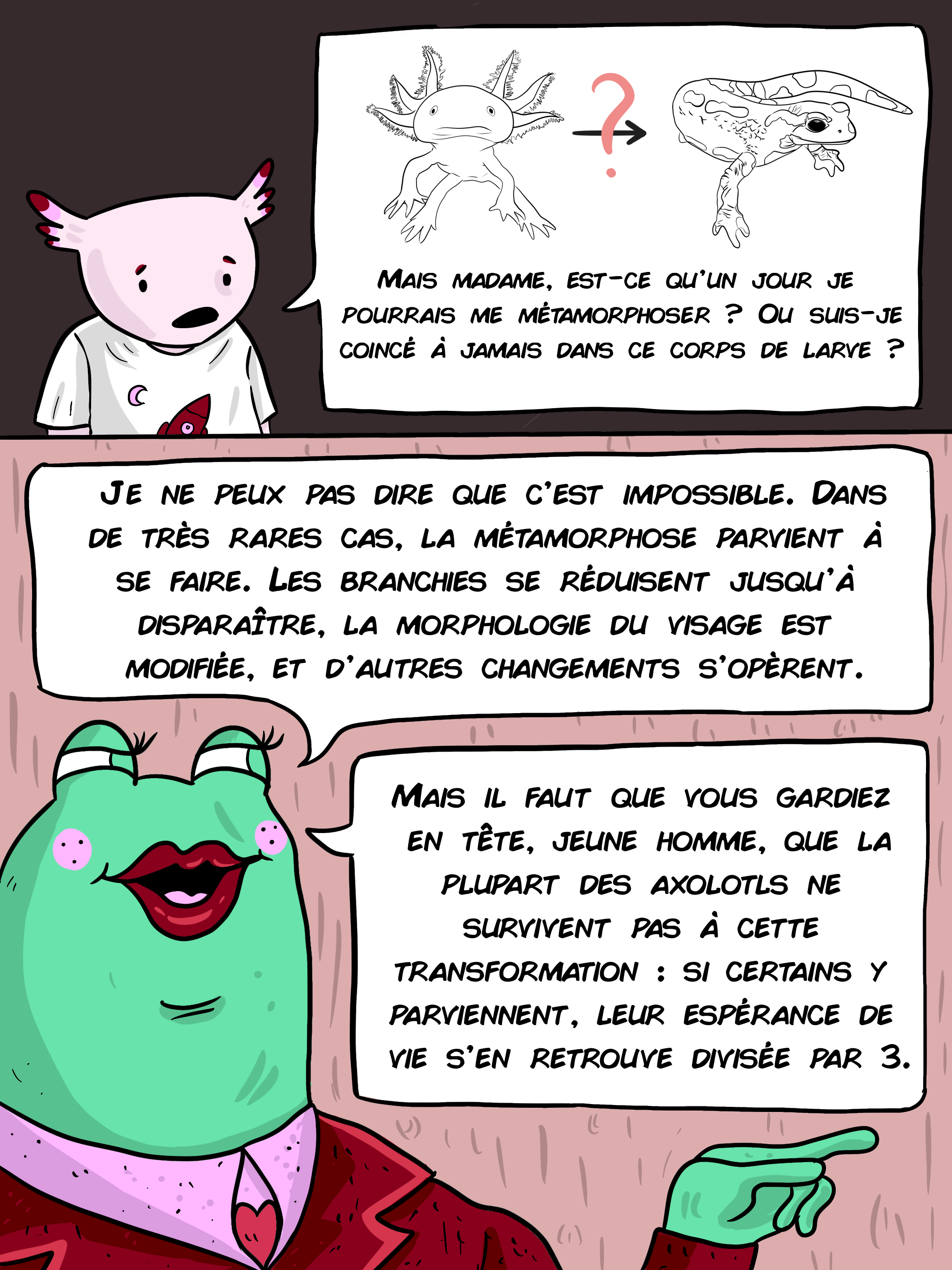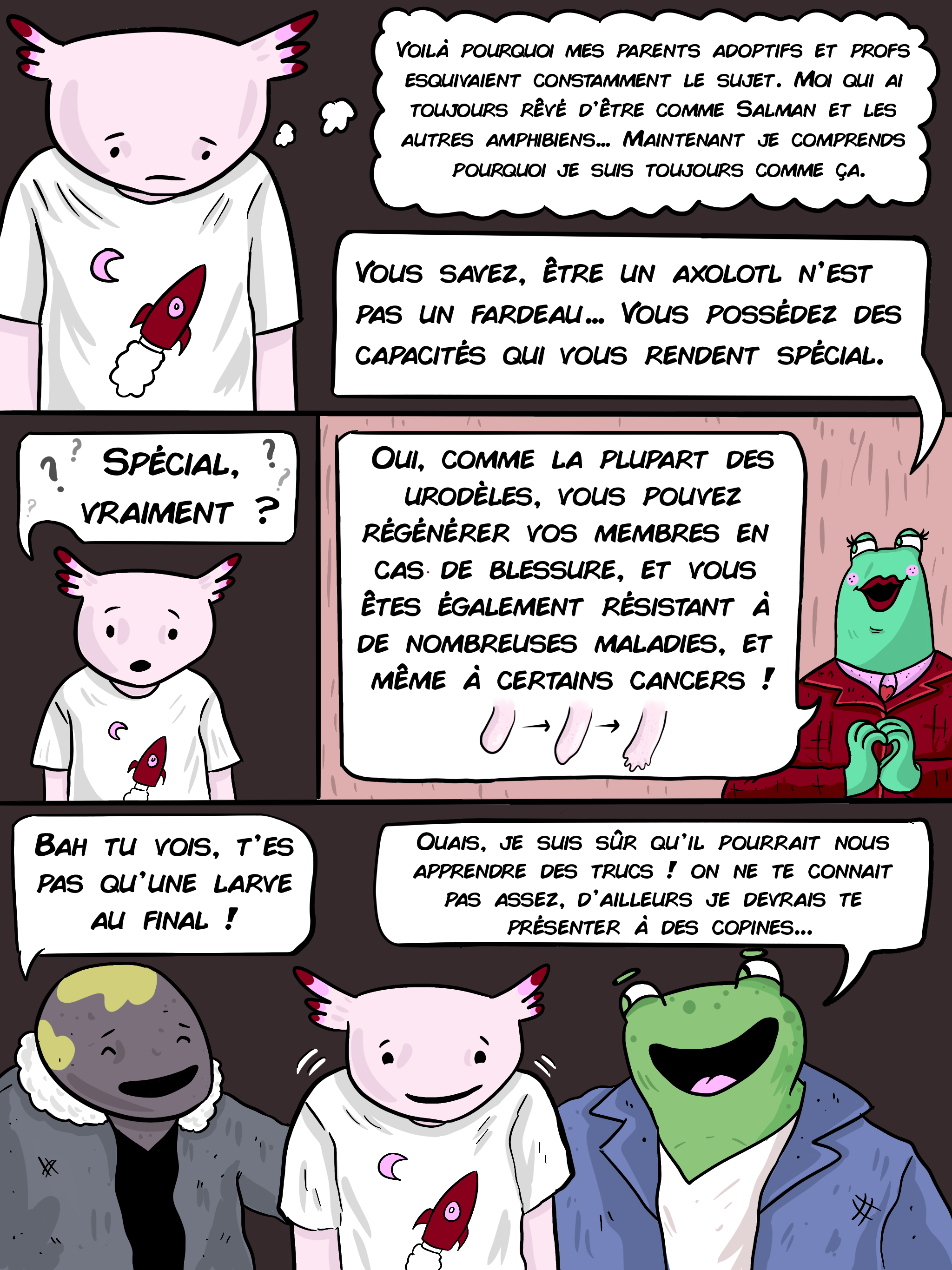Mots clés : Billets de Blog, Bionum, Stranger Species
Bibliographie :
Partie présentation axolotl :
Articles, livres scientifiques :
– Reiß, C., Olsson, L., & Hoßfeld, U. (2015). The history of the oldest self-sustaining laboratory animal : 150 years of axolotl research. Journal of Experimental Zoology Part B: Molecular and Developmental Evolution, 324(5), 393 404. https://doi.org/10.1002/jez.b.22617
– Roy, R. (2001). Michel Boulard : Métamorphoses et transformations animales. Oblitérations évolutives. Travaux de l’Institut Charles Darwin International, Société nouvelle des éditions Boubée, Paris, avril 2000. Bulletin de la Société entomologique de France, 106(1), 99 100
– Baud, Patrick, et Pierre Kerner. Nature secrète: merveilles insolites du vivant. Dunod, 2019. ISBN : 2100789503
Blogs / vidéos / autres :
– « Ambystoma mexicanum (Axolotl) ». AquaPortail, 25 février 2020, https://www.aquaportail.com/fiche-terrariophilie-1924-ambystoma-mexicanum.html
– « Pourquoi l’axolotl est-il un animal vraiment cool ? » Scienti’Click, 8 février 2017, https://scienticlick.fr/axolotl-animal-vraiment-cool/
Partie pédomorphose/ néoténie :
Articles scientifiques :
– Nye, H. L. D., Cameron, J. A., Chernoff, E. A. G., & Stocum, D. L. (2003). Extending the table of stages of normal development of the axolotl : Limb development. Developmental Dynamics, 226(3), 555 560. https://doi.org/10.1002/dvdy.10237
– Johnson CK, Voss SR. Salamander paedomorphosis: linking thyroid hormone to life history and life cycle evolution. Curr Top Dev Biol. (2013) 103:229–58. doi: 10.1016/B978-0-12-385979-2.00008-3
– Renard, J. (2010). L’axolotl. De la controverse scientifique au mythe littéraire. Sociétés, 108(2), 19-32. doi:10.3917/soc.108.0019
– Rosenkilde, P., et A. P. Ussing. « What Mechanisms Control Neoteny and Regulate Induced Metamorphosis in Urodeles? » International Journal of Developmental Biology, vol. 40, no 4, juillet 2004, p. 665‑73. www.ijdb.ehu.es, doi:10.1387/ijdb.8877439
Blogs / vidéos / autres :
– Développement des embryons. Axolotl Passion, 18 mai 2019, https://www.axolotl-passion.net/pages/reproduction/developpement-des-embryons.html
– Semik. . « La néoténie de l’axolotl » Strange Stuff And Funky Things, 6 avril 2009, http://ssaft.com/Blog/dotclear/index.php?post/2009/04/06/La-n%C3%A9ot%C3%A9nie-de-l-axolotl
– Roud, Tom. « La néoténie de l’axolotl ». Café des sciences, 12 avril 2009, https://www.cafe-sciences.org/la-neotenie-de-laxolotl-2/.
– Définition de pédogenèse. AquaPortail, 8 novembre 2018, https://www.aquaportail.com/definition-4839-pedogenese.html
– Paedomorphosis | biology. (s. d.). Encyclopedia Britannica, 21 septembre 2015, https://www.britannica.com/science/paedomorphosis
– Lazard, L. « NÉOTÉNIE », Encyclopædia Universalis, (s.d) Consulté 1 février 2020, à l’adresse http://www.universalis.fr/encyclopedie/neotenie/
– Anonyme « Métamorphose ». (s. d.) AXOLOTLS.CA, http://www.axolotls.ca/meacutetamorphose.html
Partie sur l’hormone thyroïdienne :
Articles scientifiques :
– Safi, R., Bertrand, S., Marchand, O., Duffraisse, M., De Luze, A., Vanacker, J., Maraninchi, M., Margotat, A., Demeneix, B., & Laudet, V. (2004). The axolotl (Ambystoma mexicanum), a neotenic amphibian, expresses functional thyroid hormone receptors. Endocrinology, 145(2):760-72.
– Brown, D. D. (1997). The role of thyroid hormone in zebrafish and axolotl development. Proceedings of the National Academy of Sciences, 94(24), 13011 13016. https://doi.org/10.1073/pnas.94.24.13011
– Page, R. B., Monaghan, J. R., Walker, J. A., & Voss, S. R. (2009). A model of transcriptional and morphological changes during thyroid hormone-induced metamorphosis of the axolotl. General and comparative endocrinology, 162(2), 219 232. https://doi.org/10.1016/j.ygcen.2009.03.001
– Crowner, A., Khatri, S., Blichmann, D., & Voss, S. R. (2019). Rediscovering the axolotl as a model for thyroid hormone dependent development. Frontiers in Endocrinology, 10, 237. https://doi.org/10.3389/fendo.2019.00237
Partie sur la génétique de l’axolotl :
Articles scientifiques :
– Tompkins, R. (1978). Genie control of axolotl metamorphosis. Integrative and Comparative Biology, 18(2), 313 319. https://doi.org/10.1093/icb/18.2.313
– De Groef B, Grommen SVH, Darras VM. Forever young: endocrinology of paedomorphosis in Mexican axolotl (Ambystoma mexicanum). Gen Comp Endocrinol. (2018) 266:194–201. doi: 10.1016/j.ygcen.201 8.05.016
Autres :
– « Le têtard : qu’est-ce que c’est ? » AquaPortail, 29 décembre 2019, https://www.aquaportail.com/definition-9264-tetard.html
– “Forever Young” de Alphaville (1984)
YouTube : https://www.youtube.com/watch?v=t1TcDHrkQYg


